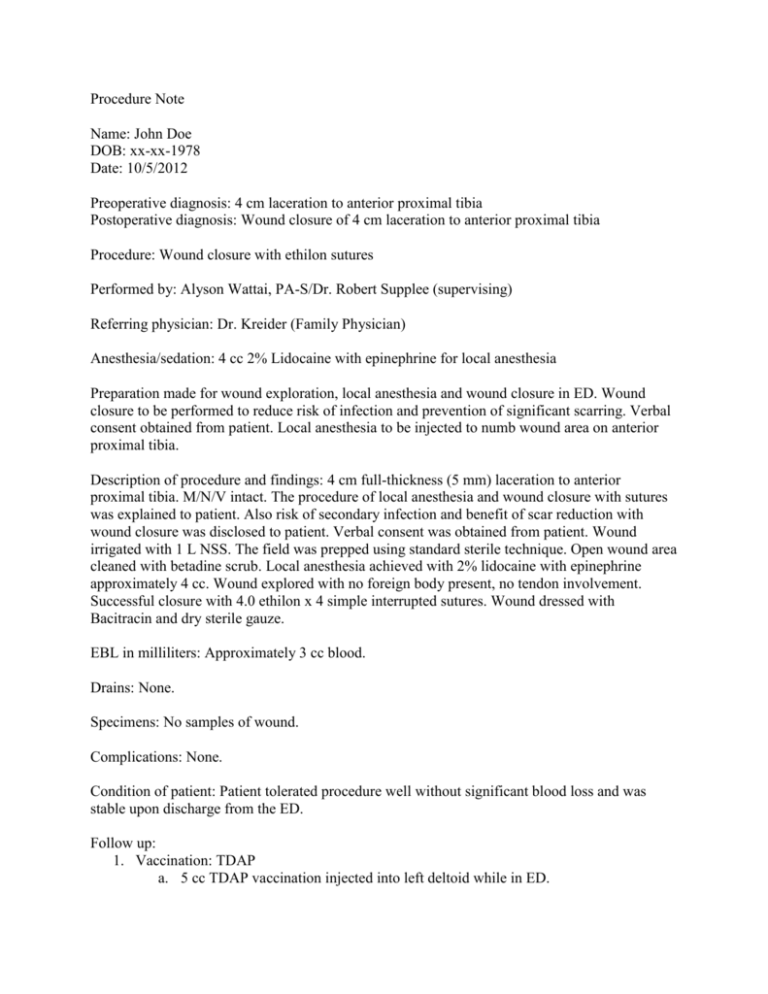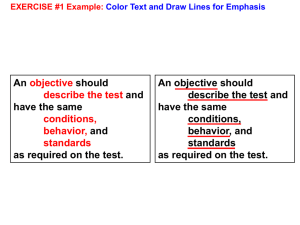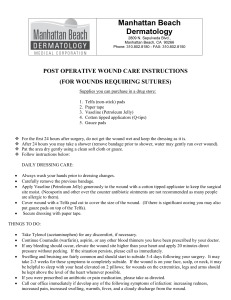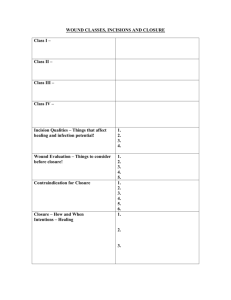Procedure Note Name: John Doe DOB: xx-xx
advertisement

Procedure Note Name: John Doe DOB: xx-xx-1978 Date: 10/5/2012 Preoperative diagnosis: 4 cm laceration to anterior proximal tibia Postoperative diagnosis: Wound closure of 4 cm laceration to anterior proximal tibia Procedure: Wound closure with ethilon sutures Performed by: Alyson Wattai, PA-S/Dr. Robert Supplee (supervising) Referring physician: Dr. Kreider (Family Physician) Anesthesia/sedation: 4 cc 2% Lidocaine with epinephrine for local anesthesia Preparation made for wound exploration, local anesthesia and wound closure in ED. Wound closure to be performed to reduce risk of infection and prevention of significant scarring. Verbal consent obtained from patient. Local anesthesia to be injected to numb wound area on anterior proximal tibia. Description of procedure and findings: 4 cm full-thickness (5 mm) laceration to anterior proximal tibia. M/N/V intact. The procedure of local anesthesia and wound closure with sutures was explained to patient. Also risk of secondary infection and benefit of scar reduction with wound closure was disclosed to patient. Verbal consent was obtained from patient. Wound irrigated with 1 L NSS. The field was prepped using standard sterile technique. Open wound area cleaned with betadine scrub. Local anesthesia achieved with 2% lidocaine with epinephrine approximately 4 cc. Wound explored with no foreign body present, no tendon involvement. Successful closure with 4.0 ethilon x 4 simple interrupted sutures. Wound dressed with Bacitracin and dry sterile gauze. EBL in milliliters: Approximately 3 cc blood. Drains: None. Specimens: No samples of wound. Complications: None. Condition of patient: Patient tolerated procedure well without significant blood loss and was stable upon discharge from the ED. Follow up: 1. Vaccination: TDAP a. 5 cc TDAP vaccination injected into left deltoid while in ED. b. Side effects of TDAP including: pain, redness or swelling at injection site, mild fever of at least 100.4 F, nausea, vomiting, chills, body aches, headache. c. Patient educated on importance of tetanus prophylaxis and to obtain TDAP vaccination every 10 years. 2. Wound care a. Patient instructed to clean wound area daily with soap and water. OTC Bacitracin or Neosporine may be used if wound appears dry. b. Keep wound covered with 4x4 gauze and tape to prevent skin irritation and infection. c. Leave sutures in for 10 days, do not remove before that time. 3. Follow up a. Patient advised to follow up with Dr. Kreider, FMD, for wound check in 5 days to ensure no secondary infection and suture removal in 10 days. b. Patient advised to return to ED if wound reopens, bleeding recurs, signs of infection including redness, tenderness, swelling, warmth or discharge from wound site. Alyson Wattai, PA-S






